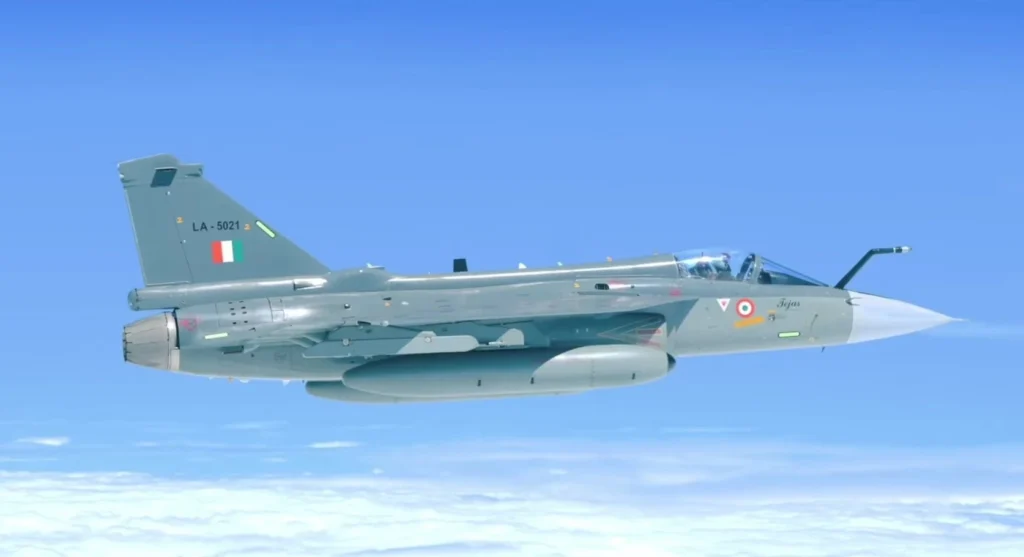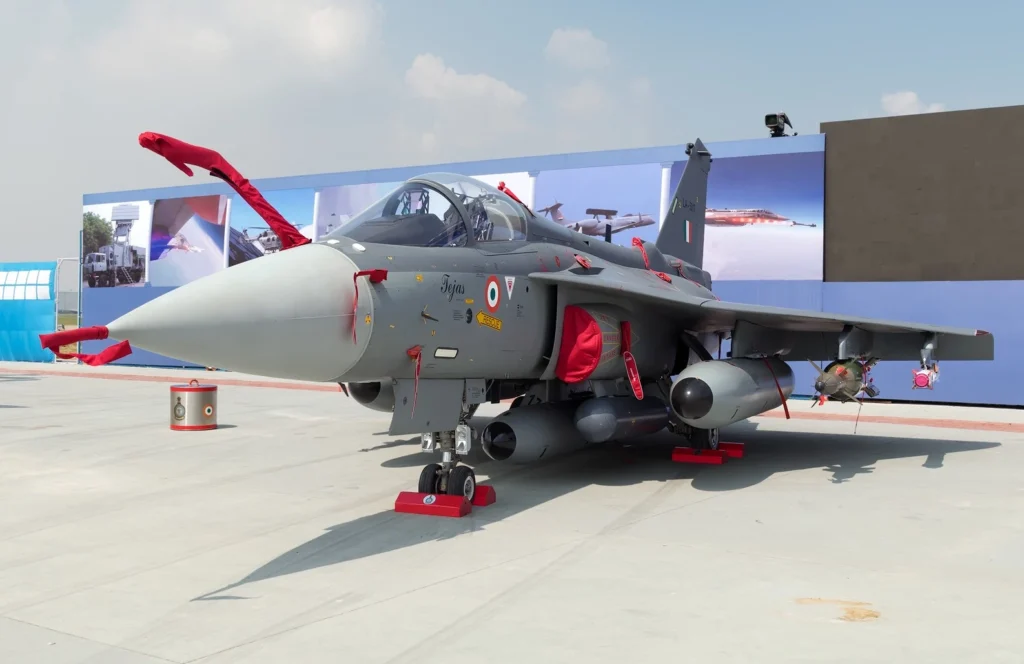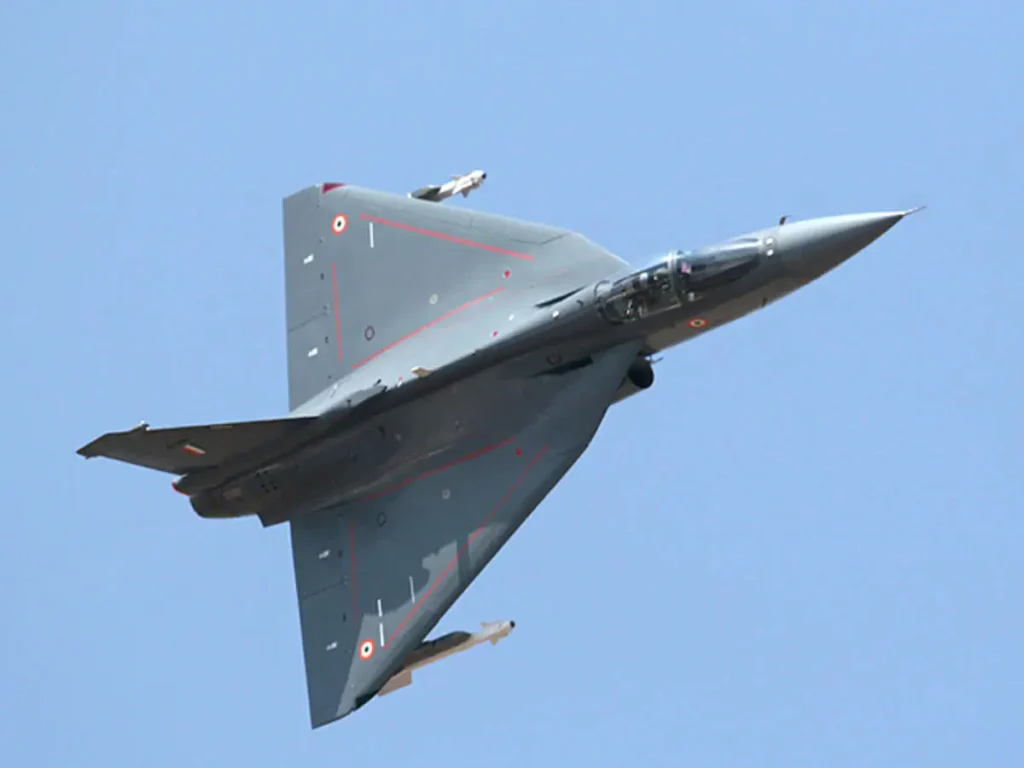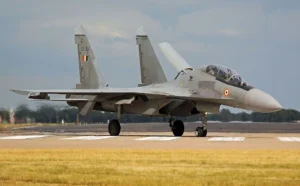Source : Mangalore Today

Tejas, India’s indigenous defense marvel, a product of the Aatmanirbhar Bharat initiative, stands as a beacon of national pride, exemplifying the country’s prowess in crafting state-of-the-art military technology. A testament to India’s innovation and capabilities, Tejas symbolizes the nation’s ability to independently develop cutting-edge advancements in defense. However, despite its remarkable strides, Tejas faces certain technical glitches that have hindered its readiness for export to the global market.
The Tejas project, initiated to bolster India’s self-reliance in defense, has undoubtedly yielded a formidable aircraft. Its successful induction into the Indian Air Force is a testament to the capabilities of our scientists and engineers. The Tejas program, initiated in 1980, represents a significant milestone in India’s pursuit of indigenous fighter aircraft. While it received its initial clearance in 2011 and final clearance in 2019, it’s noteworthy that only one squadron of Tejas is currently operational in the Indian Air Force (IAF). In this context, exporting the Tejas to other countries may require careful consideration. The current operational status of just one squadron in the IAF could indicate that more time and testing are needed to fully validate the aircraft’s capabilities in various operational scenarios.
One of the primary concerns revolves around the aircraft’s avionics system. While the Tejas boasts advanced features, there have been instances where glitches in the avionics have been reported during operational tests. These issues, though not insurmountable, highlight the need for meticulous fine-tuning to ensure the reliability and effectiveness of the system in diverse operational environments.
Another area of focus should be the integration of modern weaponry. Tejas, designed to be a multi-role combat aircraft, needs to seamlessly integrate a variety of weapons systems to cater to the evolving needs of modern warfare. Delays in perfecting this integration have slowed down the export-readiness of the aircraft.
Furthermore, the indigenous Kaveri engine, developed to power the Tejas, has faced setbacks, impacting the overall performance of the aircraft. While the GE F404 engine has served as a temporary solution, achieving optimal performance with the Kaveri engine is crucial for the long-term success and competitiveness of Tejas in the global market.

In addition to this, there are problems with the fuselage, with cracks being detected in the lower fairing skin; this is an area that is most affected by G or gravity-related pressures. The Tejas has also encountered with the landing gear issues, and experts have expressed concerns about its weight, which could pose operational problems. Efforts are underway to address these issues and refine the aircraft for optimal performance and safety.
It’s imperative to acknowledge that addressing these technical challenges is not a sign of failure but a testament to India’s commitment to delivering a world-class product. The journey from development to export readiness is intricate, demanding unwavering dedication and continuous improvement.
In accordance with sources countries like Argentina, Egypt, Philippines and Indonesia and Nigeria are interested in buying the LCA Tejas however, considering the technical and operational challenges faced by the Tejas, exporting the aircraft to other nations could potentially harm India’s global image. The Tejas isn’t just an aircraft; it’s a source of pride for India that requires some time for refinement. Exporting it with existing issues could be a significant setback for India’s defense exports and overall global reputation for innovation and reliability. It’s crucial to recognize that India, like any nation, undergoes a continuous process of development and improvement. Rushing the export of Tejas, especially without addressing its current challenges, might provide fodder for adverse states to criticize and mock India. This could lead to the spread of propaganda against India, damaging its growing image as an innovator and reliable partner.
According to Hindustan Aeronautical Limited, the upgraded MK1A variant of the Tejas is slated to be delivered to the Indian Air Force (IAF) this year. The plan is to deliver all 83 required aircraft by 2029. It would be prudent for the government to wait until this variant becomes operational with the IAF. If the MK1A variant successfully passes all tests and receives clearance from the IAF, then it could be considered for export. By allowing the MK1A variant to undergo operational testing within the Indian Air Force, any potential issues or challenges can be addressed and resolved before considering international exports.
Some observers suggest that authorities might be influenced by Pakistan’s success in exporting the JF-17 fighter jet. However, it’s essential to prioritize the thorough refinement of the Tejas before pursuing similar milestones. Taking the time to ensure the aircraft meets the highest standards will not only safeguard India’s reputation but also contribute to a more successful and sustainable global presence in defense exports.

To accelerate Tejas’s journey towards global acceptance, a collaborative approach involving the Defense Research and Development Organization (DRDO), Hindustan Aeronautics Limited (HAL), and other stakeholders is crucial. The synergy of expertise and resources will expedite the resolution of technical glitches, ensuring Tejas meets the stringent standards required for international export.
International collaborations can also play a pivotal role in this regard. Partnering with global defense technology leaders for joint research and development ventures can provide invaluable insights and expedite the resolution of technical challenges. Additionally, it opens avenues for incorporating state-of-the-art technologies, making Tejas an even more attractive proposition for potential buyers.
India’s defense capabilities are no longer confined to domestic boundaries. Tejas has the potential to become a symbol of India’s technological prowess on the global stage. By proactively addressing and overcoming the technical glitches, India can position Tejas as a reliable and competitive option in the international defense market.
In conclusion, the journey from a successful indigenous project to a globally-exportable aircraft involves overcoming technical hurdles. India has the talent, determination, and resilience to navigate these challenges successfully. With a concerted effort from all stakeholders, Tejas can transcend its current limitations, making India a significant player in the global defense industry and contributing to a safer and more secure world.






